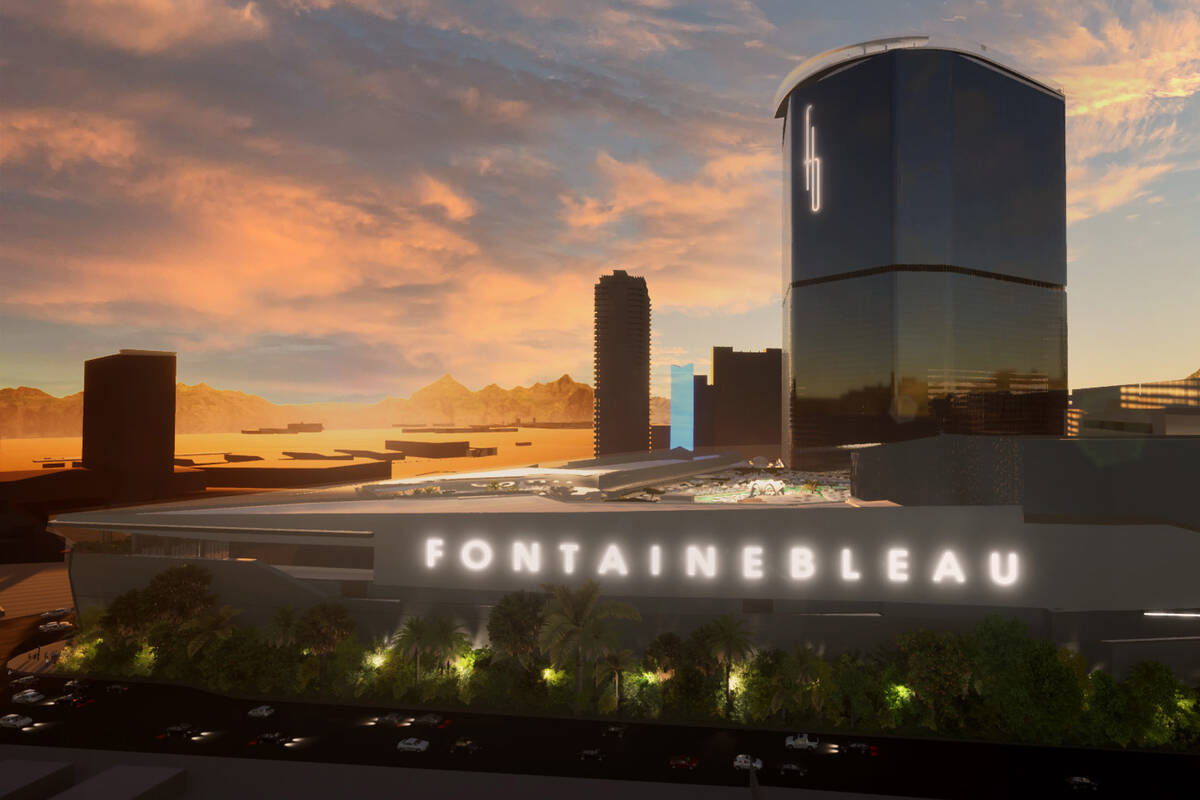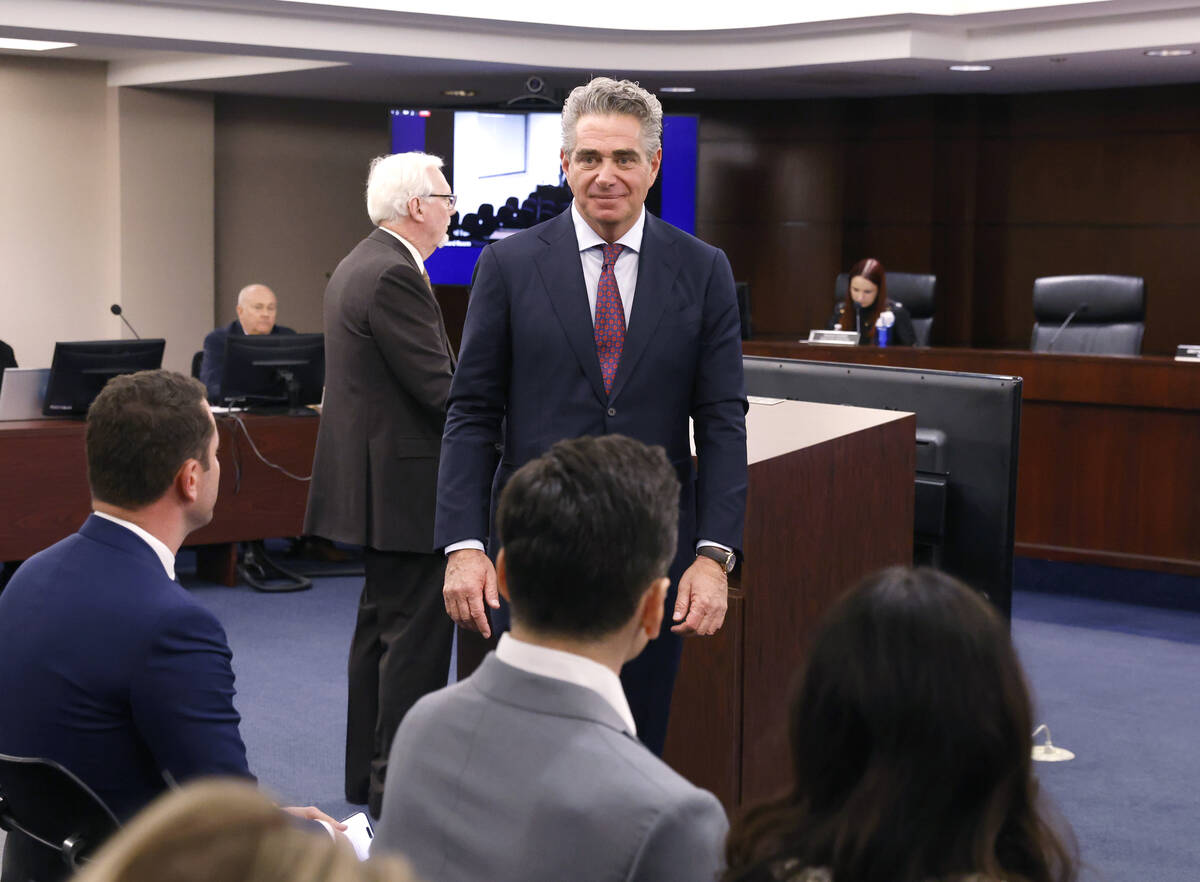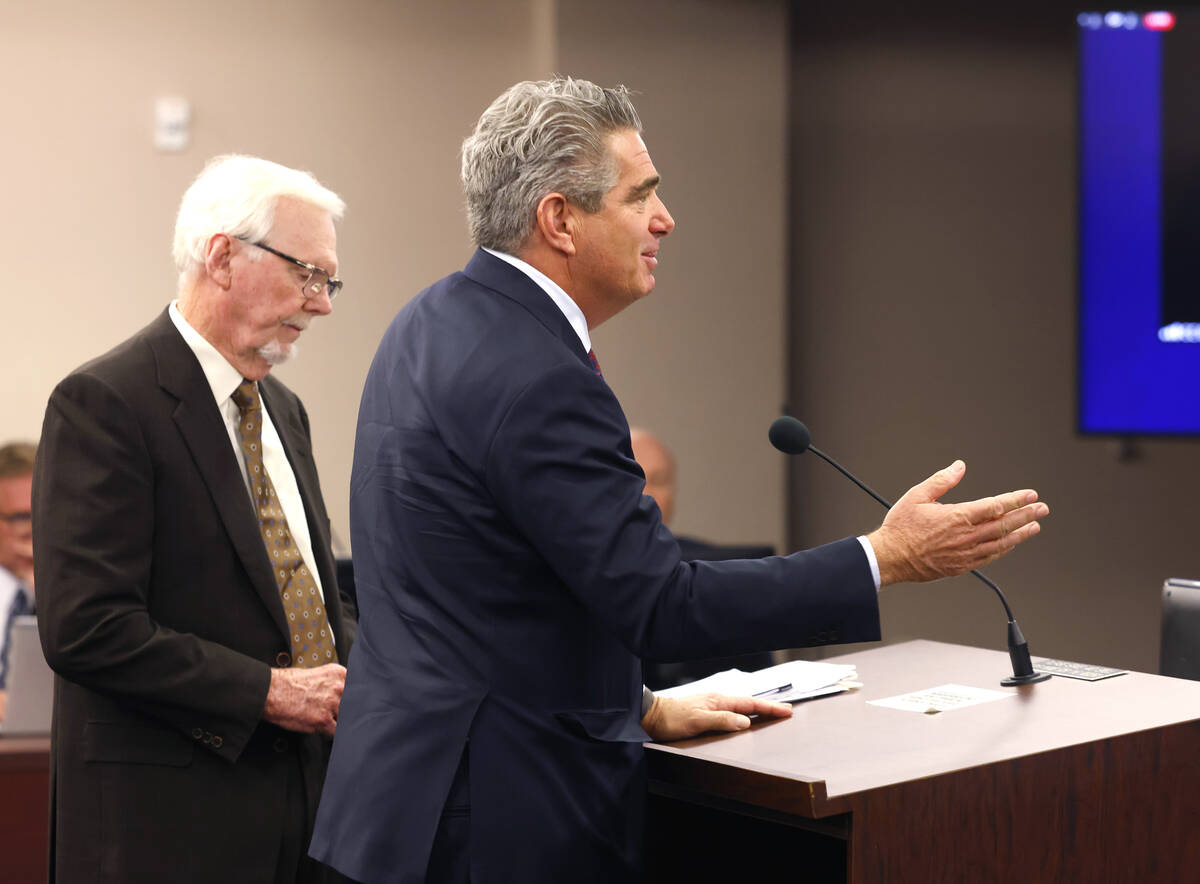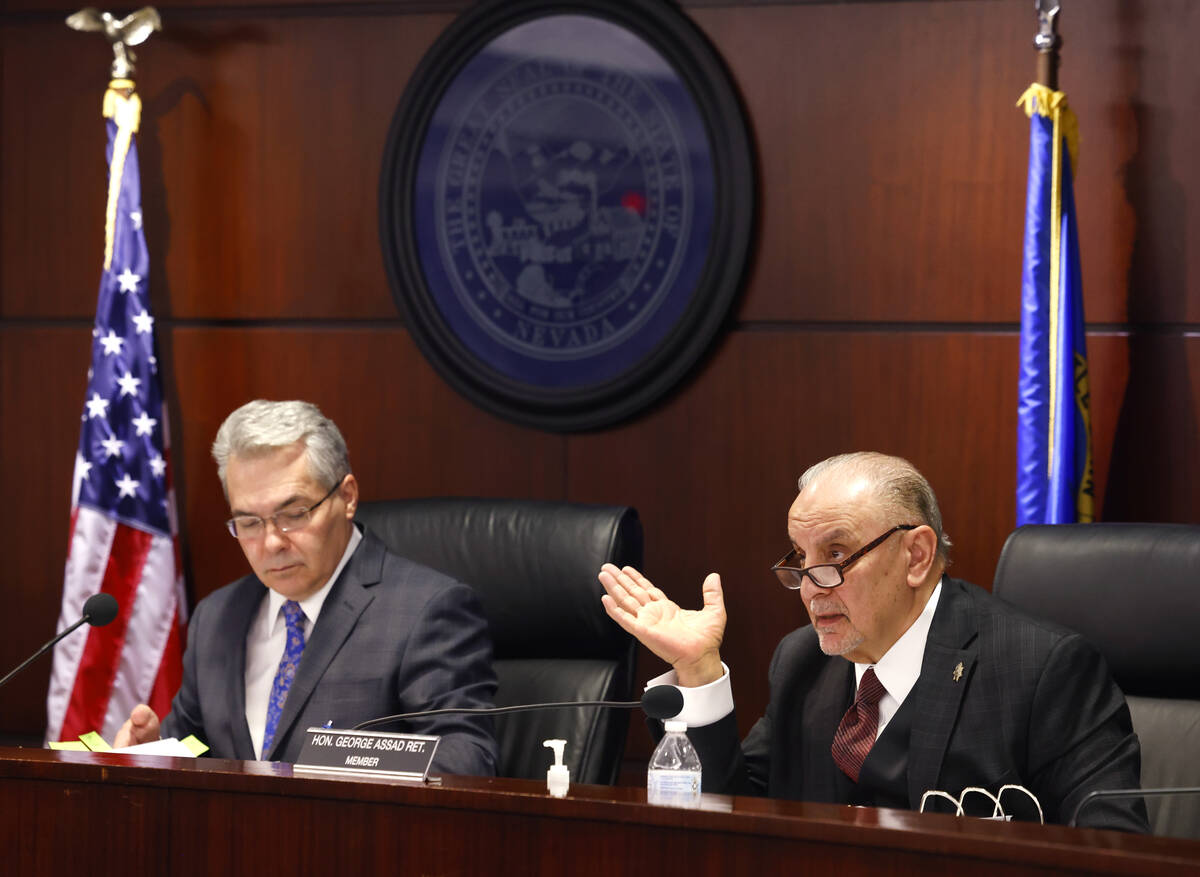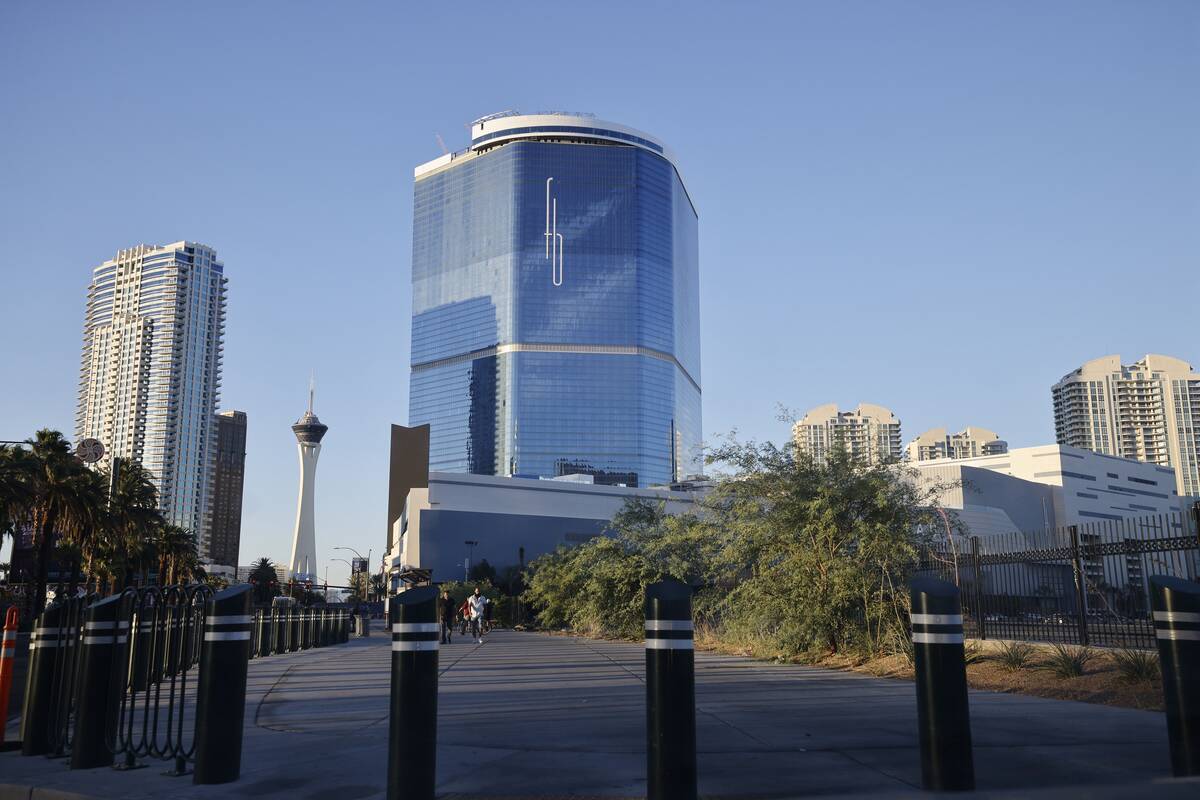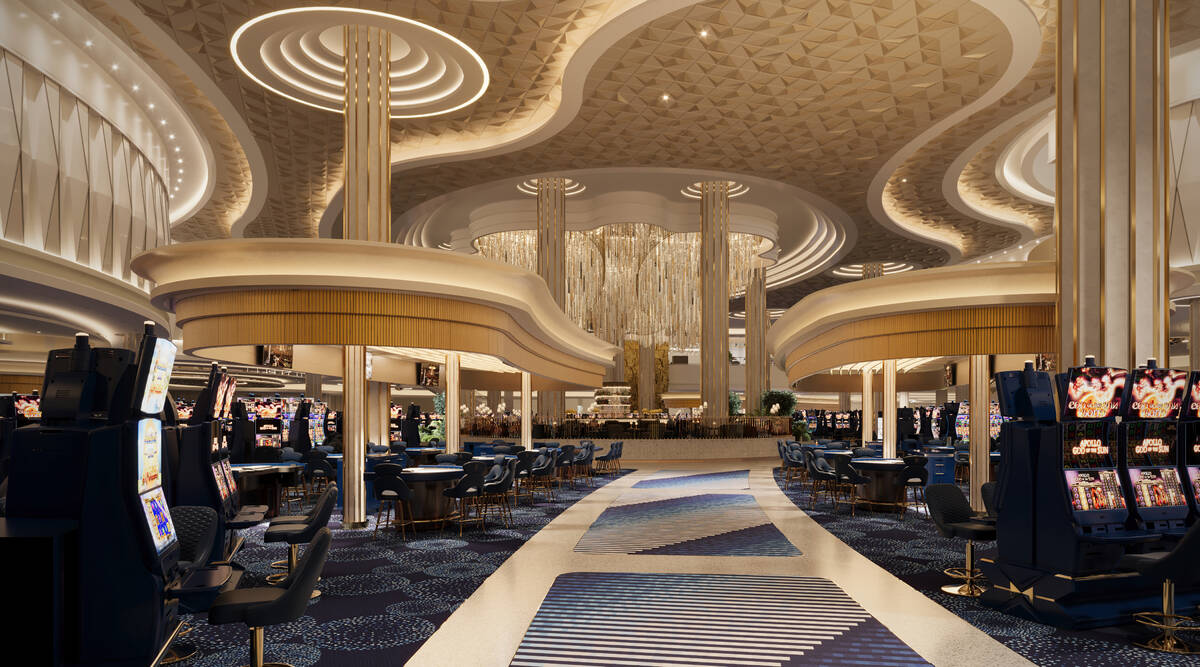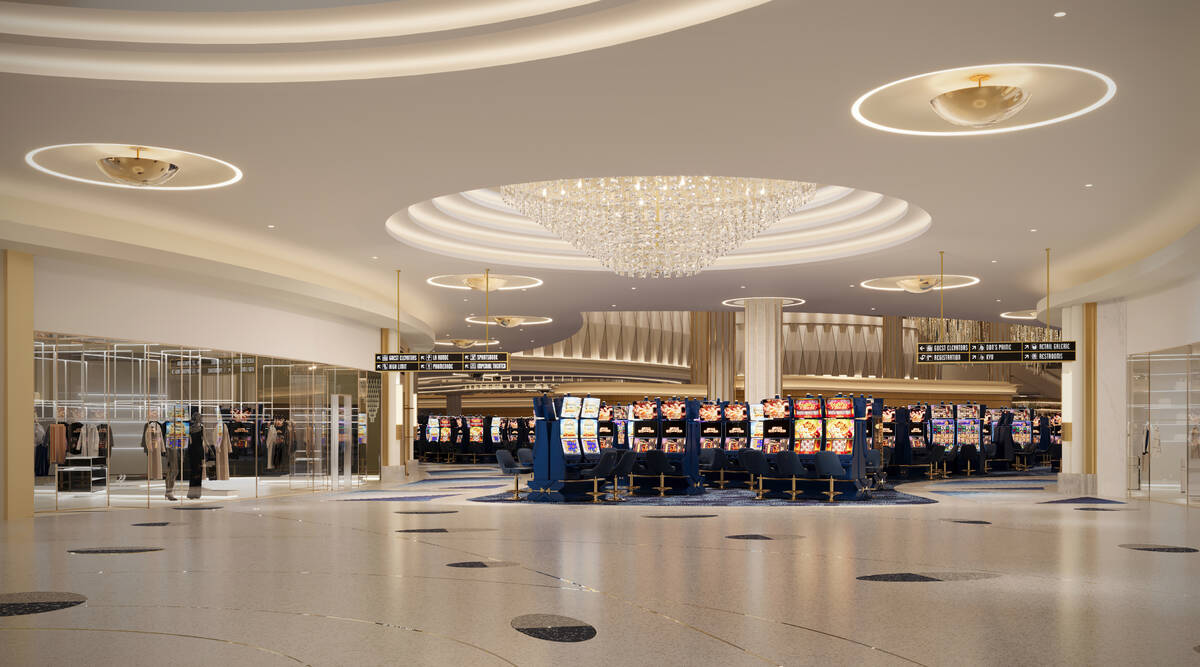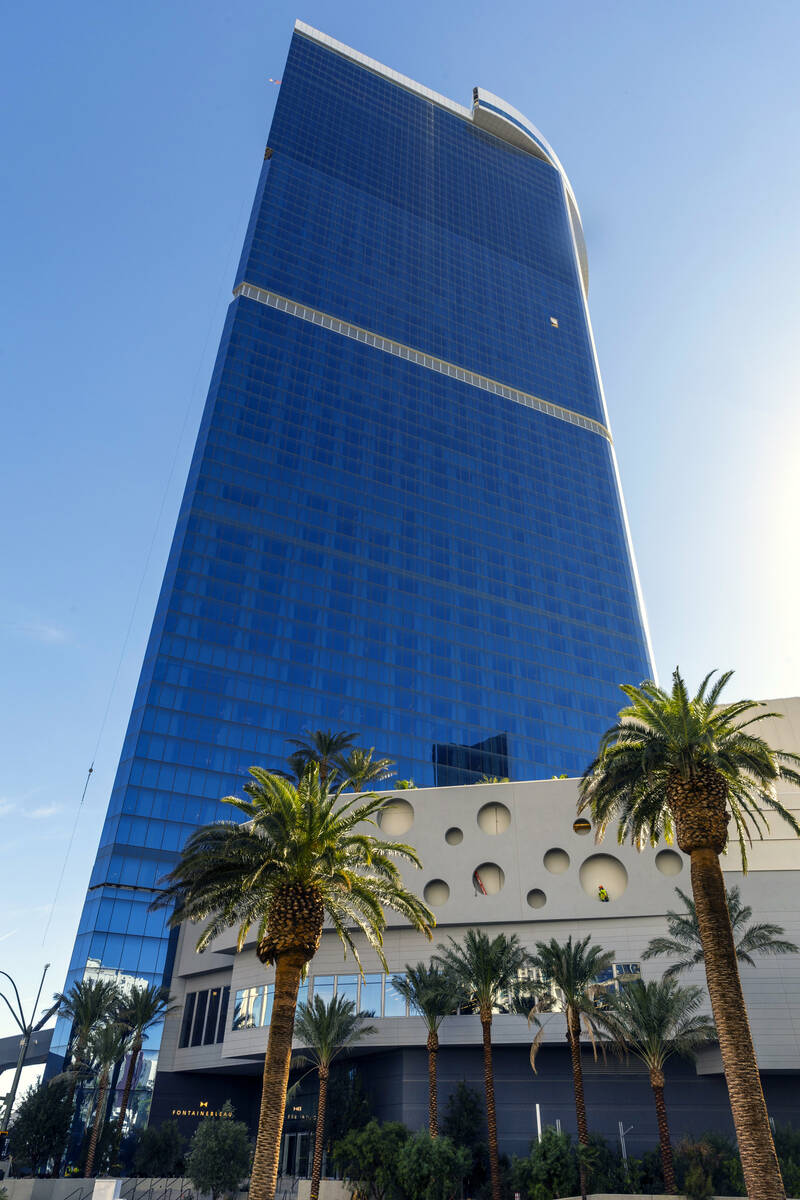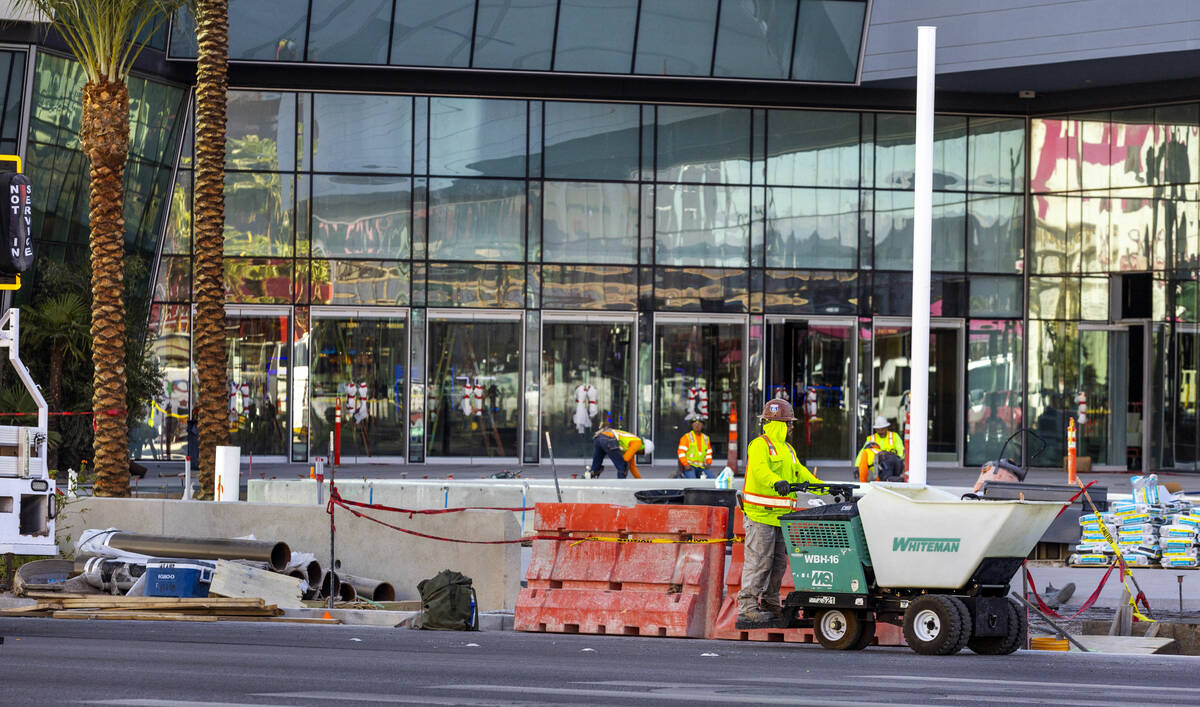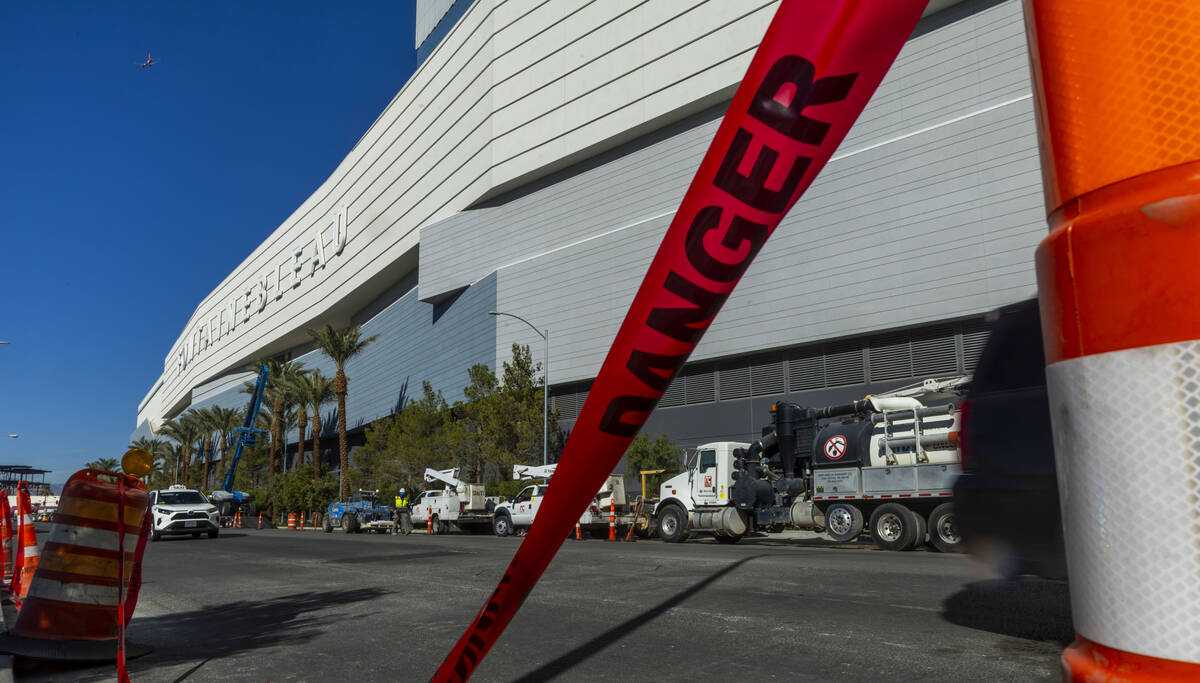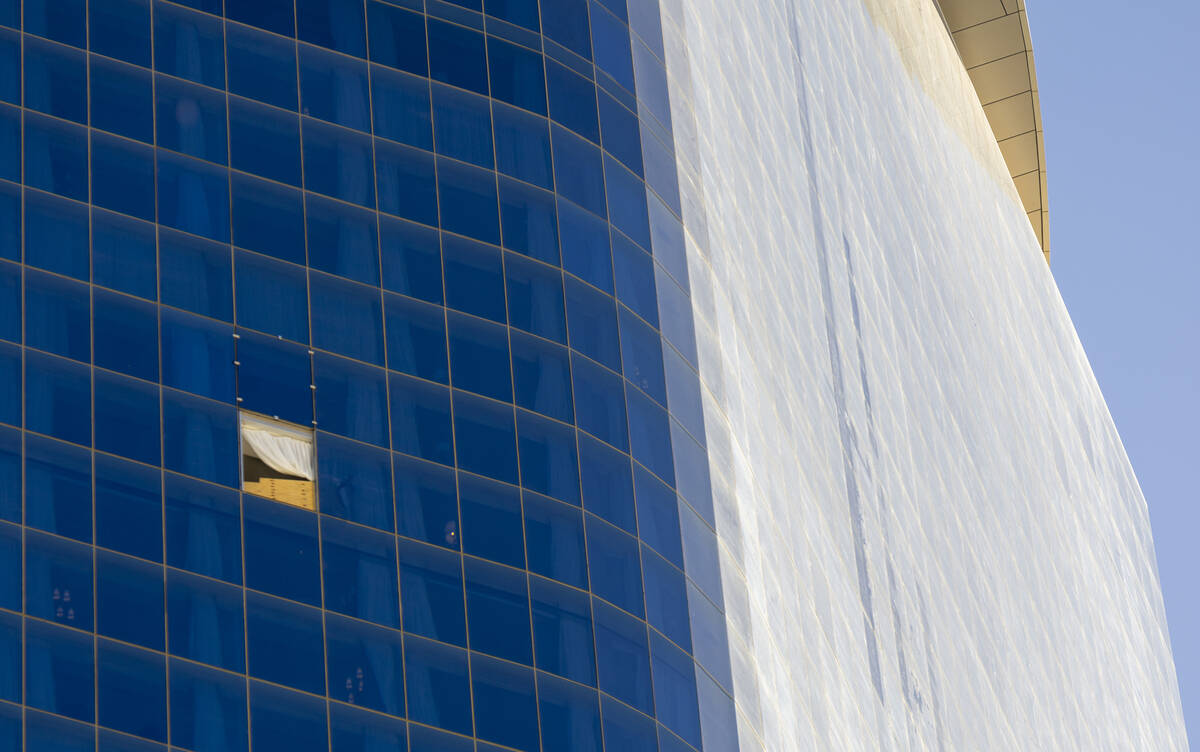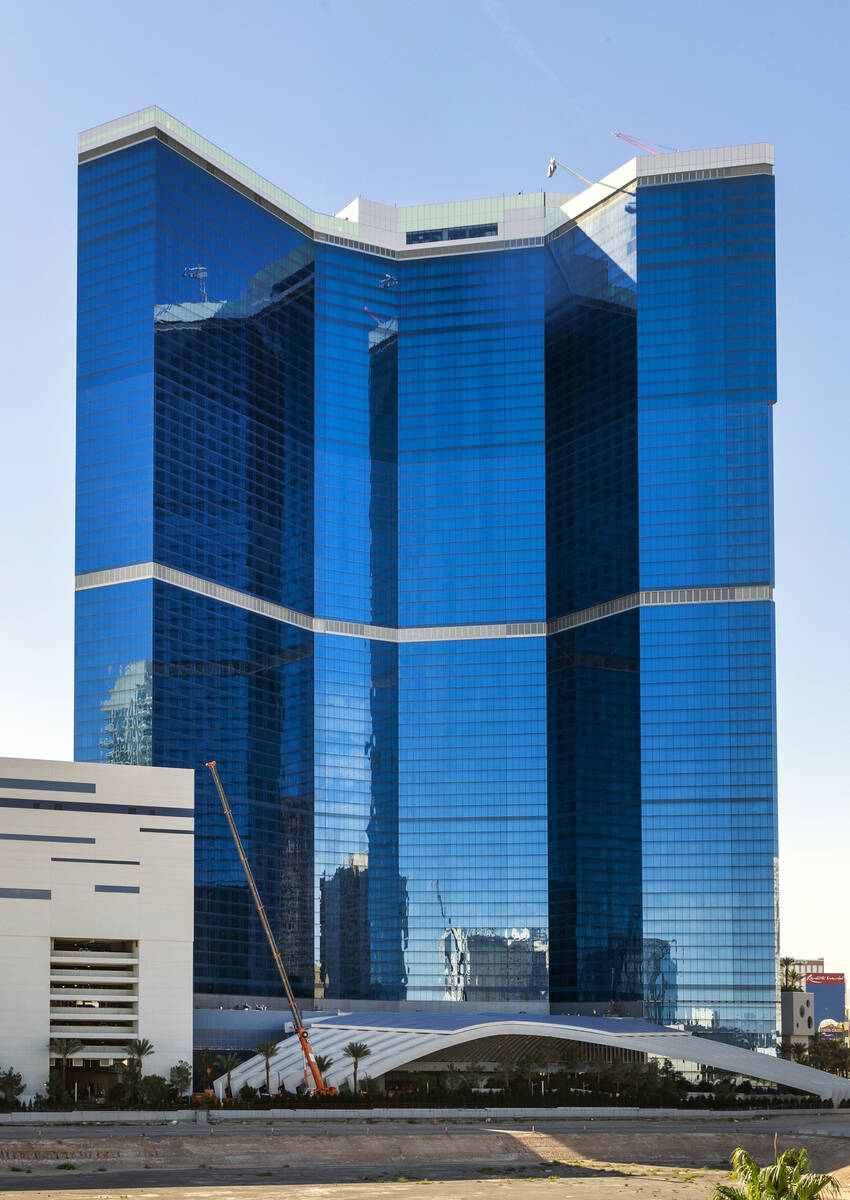Fontainebleau developers kept plans for luxury resort ‘close to our vest’
Stepping up to the podium in front of the Nevada Gaming Control Board, Fontainebleau Development President Brett Mufson made a tongue-in-cheek promise to regulators.
“I assure you, those windows are going to be closed up pretty soon,” Mufson joked, referencing some remaining exterior work-in-progress visible from the street.
His passing comment reflects the deep interest that Las Vegas has had in the resort’s development, a story that has been written in fits and starts since the project was first announced in 2005. Some locals are so tuned into the project that they watch construction for progress and delays.
Roughly six weeks away from its Dec. 13 opening, the $3.7 billion Fontainebleau Las Vegas is closer than it has ever been to welcoming the public inside. Its past was plagued by financing woes and ownership changes that came to define the building as a symbol of the Great Recession on the Strip skyline. But in two years since Jeffrey Soffer — the man behind the original project pitch — reacquired the 737-foot-tall building on the north Strip, a new vision for the glittering blue building has emerged.
“I don’t think the market realizes what we’re building,” Mufson said in an interview with the Las Vegas Review-Journal. “We’ve kept it close to our vest for the right reasons. I think it’s going to work to our benefit and really going to have a beautiful impact on the landscape.”
Fontainebleau’s Las Vegas past
The building has a storied history on the Las Vegas skyline. Soffer and longtime gaming executive Glenn Schaeffer proposed a roughly $3 billion resort with roughly 1,000 condominium units to serve as a sister property to the eponymous Miami Beach hotel. Construction crews began their work in 2007. Progress continued through 2008 — even as other Strip projects began to falter from financial insecurities and cost overruns during the Great Recession.
But lenders became skittish a year later and reneged on $800 million in pre-approved loans. Construction stopped in April 2009, and by June, the owners sought bankruptcy protection.
Billionaire corporate raider Carl Icahn bought the incomplete building for $150 million in February 2010. He held onto the asset for years, selling off the furniture and fixtures at massive discounts to more value-driven brands that purchased them, such as the Plaza in downtown Las Vegas and Buffalo Bill’s casino in Primm.
Icahn put the property on the market again in late 2015, and it sold in 2017 to real estate investment firms Witkoff and New Valley for $600 million. Steve Witkoff, the firm’s founder, planned a new resort called the Drew Las Vegas and partnered with Marriott International, which planned to spend $50 million for an ownership stake in the property.
In 2019, Witkoff told the Review-Journal the interior had unfinished walls, ceilings and escalators, exposed beams and columns, and a partially built theater.
The Drew targeted a 2020 opening but pushed it back to 2022. Crews were on site in early 2020 but were suspended after Las Vegas started shutting down over COVID-19 pandemic-related concerns.
By February 2021, the property once again had a new — and familiar — owner: Soffer. He teamed with the real estate wing of Koch Industries to acquire the property for an undisclosed price.
Leaning into luxury, group business
Crews went straight to work once the Fontainebleau Development team got the keys back to 2777 Las Vegas Boulevard S., Mufson said. The building was already a shell, having been cleared out by Icahn’s team. The Fontainebleau Development team took some of its original design plans forward, but new plans emerged for the project.
To start, Fontainebleau scrapped the condo plans it once had for the property. It began to focus more on group and convention visitors. While there were always plans for a massive meeting space, the opening of the Las Vegas Convention Center West Hall in 2021 made a pivot to meeting and event business a more natural fit.
The property will have 550,000 square feet of event space across five levels, including an outdoor meeting space and a pillarless ballroom that can fit two Boeing 747 airplanes nose-to-nose.
“(It’s been an) enormous lift for our sales force in driving visitors for years to come,” Mufson said. “We’ve locked in a significant amount of rooms two or three years in advance, and I think that’s a testament to the location being across the street from the West Hall. It provides an enormous amount of synergies.”
Fontainebleau developers returned to a building that was roughly 75 percent complete. Soffer said there were fewer challenges in constructing the project because Nevada’s dry climate kept building quality intact.
The biggest success in the most recent development of the property, Soffer and Mufson said, was its ability to stick to its intended timeline. The team targeted late 2023 as the opening date since they reacquired the asset.
Because the furnishings and fixtures were gone but the structural bones remained useful, the team was able to reconsider the previous goal of creating a four-star hotel product.
“The times have changed, the markets have changed. It’s an ultra-luxury resort,” Soffer said. “My vision originally was a little different, more aspirational. Now it’s looking at the luxury side of the business and the group side.”
Six weeks until opening
With roughly six weeks until its public opening, the team is focused on hiring and onboarding the roughly 5,000 employees who will operate the property. Inside the building, work is transitioning from construction crews to operations, he said.
Development teams studied the iconic Miami Beach property designed by Morris Lapidus, which opened in 1954. Lapidus’ “reinvention of art deco” was an influence on the Las Vegas resort’s interior, Mufson said. The exterior — consisting of sleek blue glass that rises 67 floors — serves almost as a foil to the inside, where cerulean blue and gold accents appear everywhere and design conventions are bent.
“We don’t have a right angle here,” Mufson said. “It’s all curved.”
The Fontainebleau team is also hoping another element will help it rise above competitors: the owner’s presence. As corporate entities become increasingly involved in gaming companies, Soffer is betting on high-end customers who want a more personalized experience.
“Las Vegas in the past had several leaders that were operators of their own places,” Soffer said. “Today they’re run by executives that work for institutional investors. People at the higher end, they want to talk to the owner. It was a big success for Mr. (Steve) Wynn in the past and Mr. (Sheldon) Adelson. I think that definitely gives us a little bit of advantage over our competitors.”
McKenna Ross is a corps member with Report for America, a national service program that places journalists into local newsrooms. Contact her at mross@reviewjournal.com. Follow @mckenna_ross_ on X.




